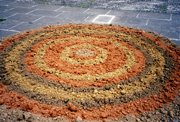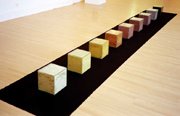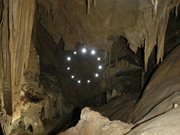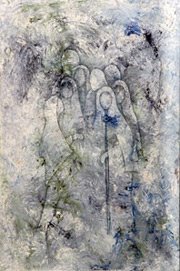The shed (El cobertizo de la historia)
My art is based on the awakening consciousness reaching back to ancient times, where the first art was placed on the cave walls, and where the caves were first used as sanctuaries.
In England the shed lives in most house back gardens. In it are stored tools, both for gardening and household repairs; bicycles, tables and chairs, and rarely used items. It is also used in many cases as a workshop, with table etc for working on. Here repairs can be made or hobbies and crafts indulged, such as making furniture, painting pictures, perhaps even writing. It is quiet place out of family environment; a place to escape into.
The shed is a repository of personal and collective histories; a place where we store our memories. We use it to hide things and ourselves. It is a place where we can retreat to and then later leave behind. Whether it is an object, a visual memory in a photograph, a distinct sound or a colour, it is here.
When El cobertizo de la historia is taken down, dismantled and placed in a store perhaps it will be forgotten, unfortunately like most of our personal histories.
My art is based on the awakening consciousness reaching back to ancient times, where the first art was placed on the cave walls, and where the caves were first used as sanctuaries.
In England the shed lives in most house back gardens. In it are stored tools, both for gardening and household repairs; bicycles, tables and chairs, and rarely used items. It is also used in many cases as a workshop, with table etc for working on. Here repairs can be made or hobbies and crafts indulged, such as making furniture, painting pictures, perhaps even writing. It is quiet place out of family environment; a place to escape into.
The shed is a repository of personal and collective histories; a place where we store our memories. We use it to hide things and ourselves. It is a place where we can retreat to and then later leave behind. Whether it is an object, a visual memory in a photograph, a distinct sound or a colour, it is here.
When El cobertizo de la historia is taken down, dismantled and placed in a store perhaps it will be forgotten, unfortunately like most of our personal histories.












No hay comentarios:
Publicar un comentario